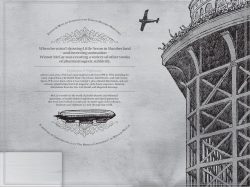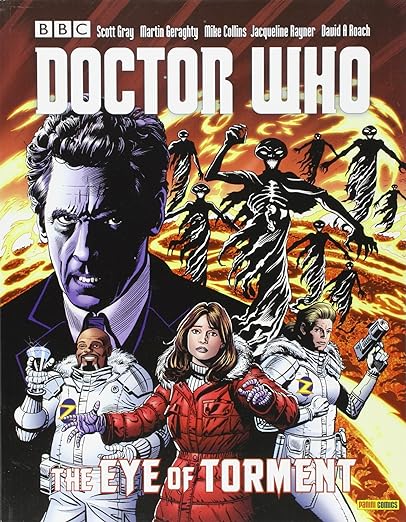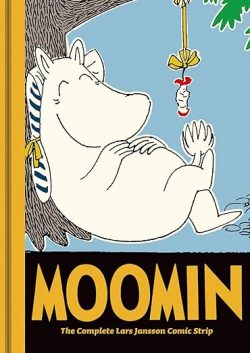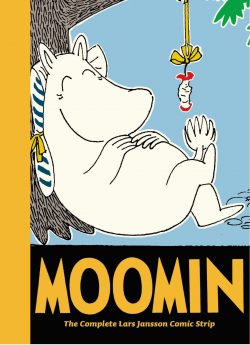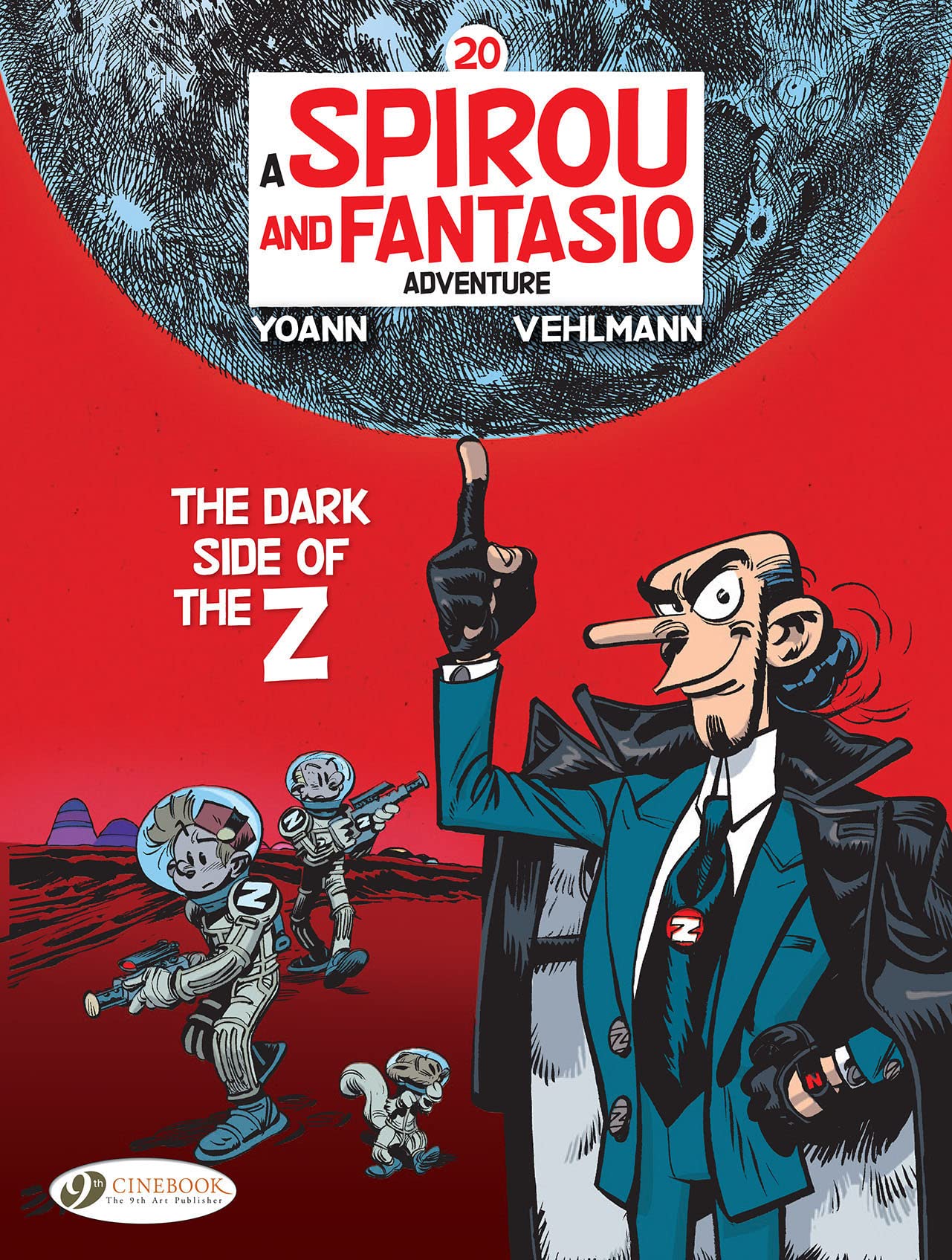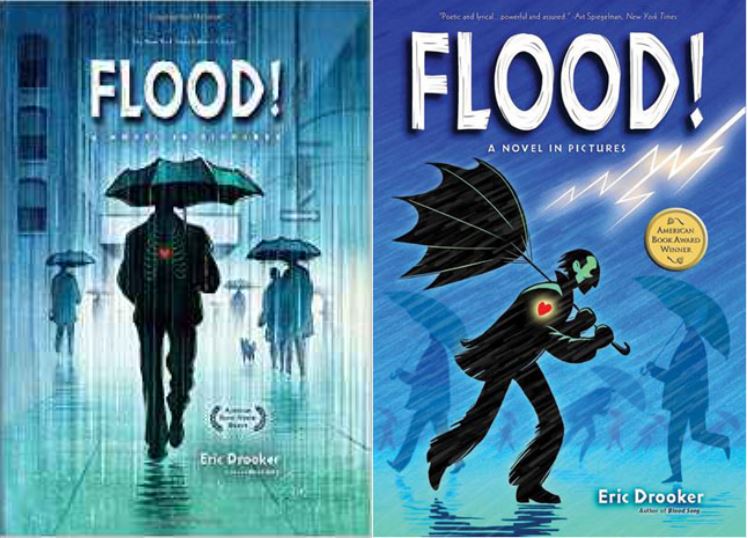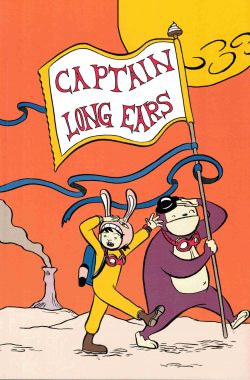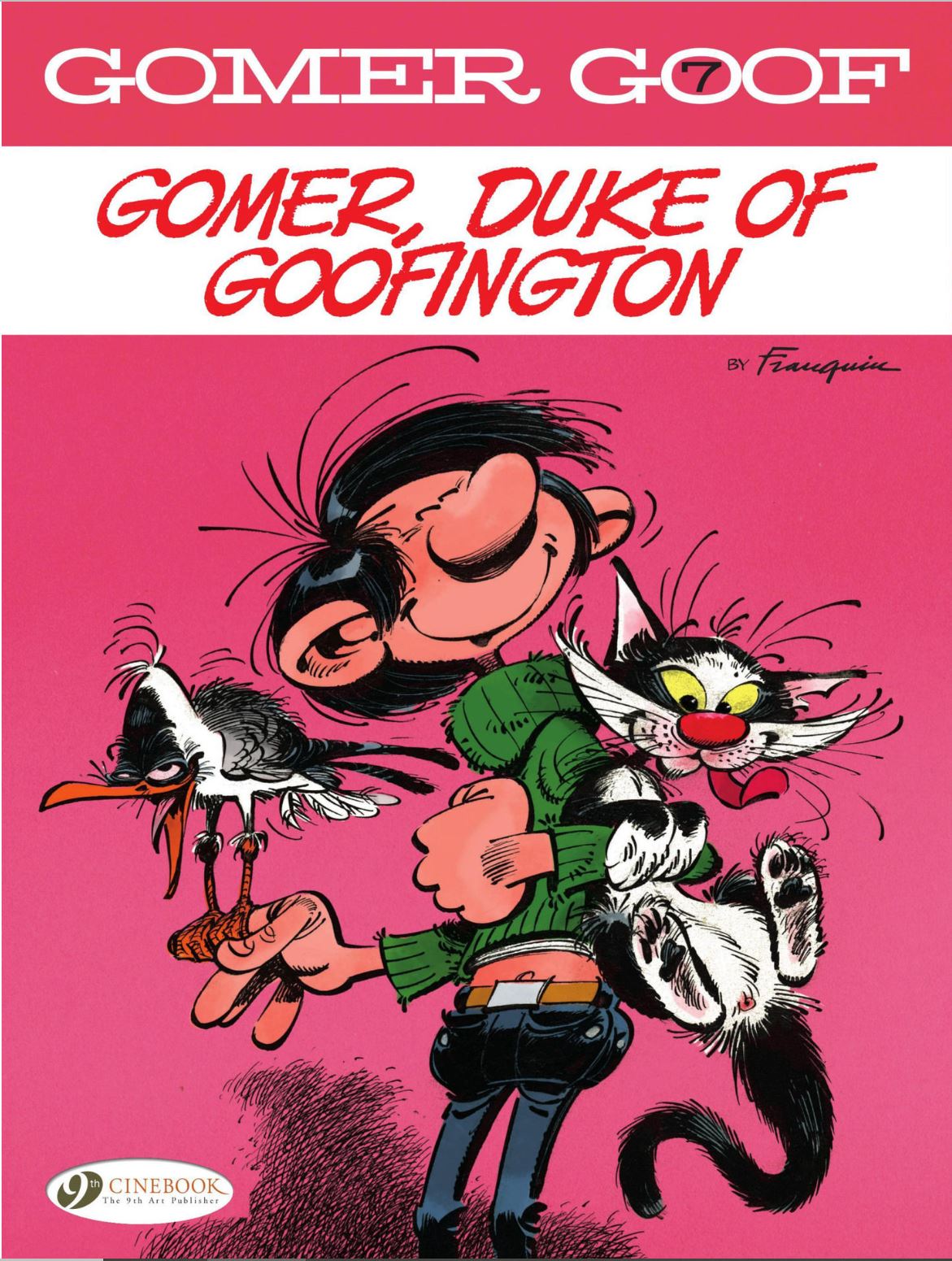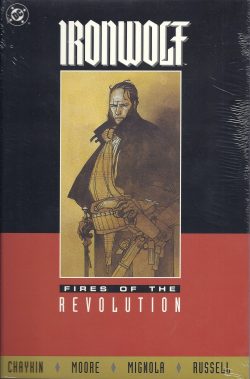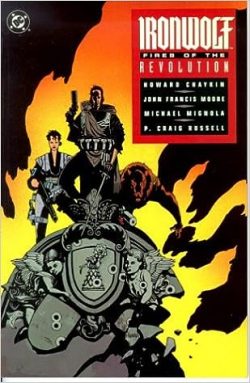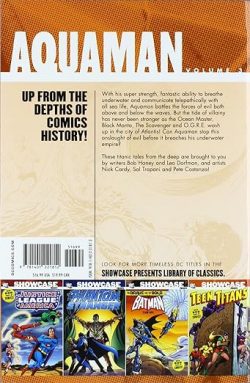
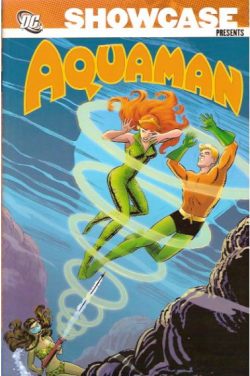
By Bob Haney, Nick Cardy, Sal Trapani, Leo Dorfman & Pete Costanza & various (DC Comics)
ISBN: 978-1-4012-2181-2 (TPB)
We’re counting down to what augurs to be another Christmas movie megahit for DC, so let’s take a look at the lengthy history of page, screen, game and giant mutated seahorse…
Aquaman was one of a handful of costumed adventurers to survive the superhero collapse at the end of the Golden Age; a rather nondescript and genial guy who solved maritime crimes and mysteries when not rescuing fish and people from sub-sea disasters. Created by Mort Weisinger and Paul Norris, he first launched in More Fun Comics #73 (1941). Strictly a second stringer for most of his career he nevertheless continued on beyond many stronger features, illustrated by Norris, Louis Cazaneuve, Charles Paris, and latterly Ramona Fradon who drew every adventure from 1954 until 1960.
When Showcase #4 rekindled the public’s taste for costumed crimefighters with the advent of a new Flash, DC updated its small band of superhero survivors, especially Green Arrow and Aquaman. Records are incomplete, sadly, so often we don’t know who wrote what, but after the revamp fuller records survive and this third black and white collection starring the King of the Seven Seas has only two creative credit conundrums.
Now with his own title and soon to be featured in the popular, groundbreaking cartoon show Superman/Aquaman Hour of Adventure, the Finned Fury seemed destined for super-stardom. These joyously outlandish tales, reprinting issues #24-39, a Brave and the Bold team-up with The Atom (# 73) and a scarce-remembered collaboration from Superman’s Pal Jimmy Olsen #115 comfortably and rapturously mark the end of the wholesome, affable hero, laying groundwork for a grittily innovative run from revolutionary editor Dick Giordano and hot new talents Steve Skeates, Jim Aparo and Neal Adams…
Those are a treat for another time, but there’s entertainment a-plenty here beginning with Aquaman #24 (November/December 1965) by an uncredited author (Dave Wood, George Kashdan or Jack Miller are strong possibilities) and regular artistic ace Nick Cardy.
In ‘Aquaman: Save Our Seas!’, the titanic tussle with maritime malcontent The Fisherman found the new parents (the Sea King and Mera were the first 1960s superheroes to marry and have kids) almost fatally easily distracted when an alien plot threatens to destroy Earth’s oceans, whilst in #25, ‘The Revolt of Aquaboy!’ by Bob Haney & Cardy sees an ancient Chinese sorcerer rapid-age the proud parents’ newborn into a spiteful ungrateful teenager as part of a plot to subjugate the sunken city of Atlantis.
The entire world went spy-crazy in the first half of the Swinging Sixties and anonymous acronymic secret societies popped up all over TV, books and comics. With #26 (March/April 1966), Aquaman joined the party when seconded by the US government (even though absolute ruler of a sovereign, if somewhat soggy, nation) to thwart the sinister schemes of the Organisation for General Revenge and Enslavement in the still surprisingly suspenseful ‘From O.G.R.E. With Love!’
With Haney & Cardy firmly ensconced as creative team, thrilling fantasy became the order of the day in such power-packed puzzlers as #27’s ‘The Battle of the Rival Aquamen’ – wherein alien hunters unleash devious duplicates of the Sea King and his Queen – before #28’s ‘Hail Aquababy, New King of Atlantis!’ introduces rogue American geneticist Dr. Starbuck. He seeks to steal the throne with subtle charm, honeyed words… and a trained gorilla and eagle modified to operate underwater…
Archenemy Orm the Ocean Master returns to attack America – and the world – in tense undersea duel ‘Aquaman, Coward-King of the Seas!’, which also provides some startling insights into the hero and villain’s shared shadowy pasts as well as the requisite thrills and chills, after which ‘The Death of Aquaman’ proves to be a guest-star-studded spectacular of subterfuge, double-cross and alien intrigue. The very much alive Sea King then finds himself a fish trapped out of water when ‘O.G.R.E. Strikes Back!, attacking the United Nations!
Ocean Master’s obscured family connections clearly struck a chord with readers as he returns in #32 to unleash the ancient leviathan ‘Tryton the Terrible’ whilst the troublesome teenagers get a tacit acknowledgement of their growing importance with the introduction of Aqua-Girl in ‘Aqualad’s Deep-Six Chick!’ (stop wincing; they were simpler, more obnoxious times and the story itself – about disaffected youth being exploited by unscrupulous adults – is a perennial and worthwhile one).
Aquaman #34 featured another evil doppelganger ‘Aquabeast the Abominable’, typifying a new, harsher sensibility in storytelling. Even though the antagonists were still generally aliens and monsters, from now on they were far meaner, scarier aliens and monsters…
The Sea King teamed up with Justice League of America compatriot The Atom in The Brave and the Bold # 73 (August/September 1967) to tackle a microscopic marauder named ‘Galg the Destroyer’ in a taut drama written by Haney and illustrated by always impressive and vastly undervalued Sal Trapani, before returning to his home-title and another deadly clash with Ocean Master and ruthless nemesis Black Manta. Never afraid to tweak the comfort zone or shake up the status quo, Haney’s excellent tale ‘Between Two Dooms!’ epitomises the growing darker sensibilities of the title, resulting in all Atlanteans losing their ability to breathe underwater, leaving Aquaman’s subjects virtual prisoners in their own sub-sea city for years to come…
Now a TV star, Aquaman went from strength to strength as Haney & Cardy pulled out all the creative stops on such resplendent battles tales as ‘What Seeks the Awesome Three?’ – pitting the hero against mechanistic marauders Magneto (no relation), Claw and Torpedo-Man – and chillingly prophetic eco-drama ‘When the Sea Dies!’, due in no small part to villains Ocean Master and The Scavenger.
Closing out his volume are two more dark thrillers and a classic guilty pleasure. Firstly, Aquaman #38 introduced a relentless, merciless vigilante who accidentally set his sights on the Atlantean Ace in ‘Justice is Mine, Saith the Liquidator!’, before ‘How to Kill a Sea King!’ tells a tragic tale of an alien seductress set on splitting up the Royal Couple. The era and this collection end with a charming treat from scripter Leo Dorfman and artist Pete Costanza taken from Superman’s Pal Jimmy Olsen #115 (October 1968).
The greatest advantage of these big value monochrome compendia was the opportunity they offered, whilst chronologically collecting a character’s adventures, to include crossovers and guest spots from other titles. When the star is as long-lived and widely travelled as Aquaman, that’s an awful lot of extra appearances for a fan to find, so the concluding tale here – taken from a title cruelly neglected by today’s fans – is an absolute gold-plated bonus…
‘Survival of the Fittest!’ sees the mystical Old Man of the Sea attempt to replace Aquaman with the far more pliant cub reporter: never realising the lad is made of far sterner and more decent stuff than the demon could possibly imagine…
DC has a long, comforting history of genteel, innocuous yarn-spinning delivered with quality artwork. Haney & Cardy’s Aquaman is an all-but-lost run of classics worthy of far more attention than they’ve received of late. It is a total pleasure to find just how readable they still are. With tumultuous sea-changes in store for the Sea King, the comics industry and America itself, the stories in this book signal the end of one glorious era and the promise – or threat – of darker, far more disturbing days to come.
© 1965-1968, 2009 DC Comics. All Rights Reserved.

